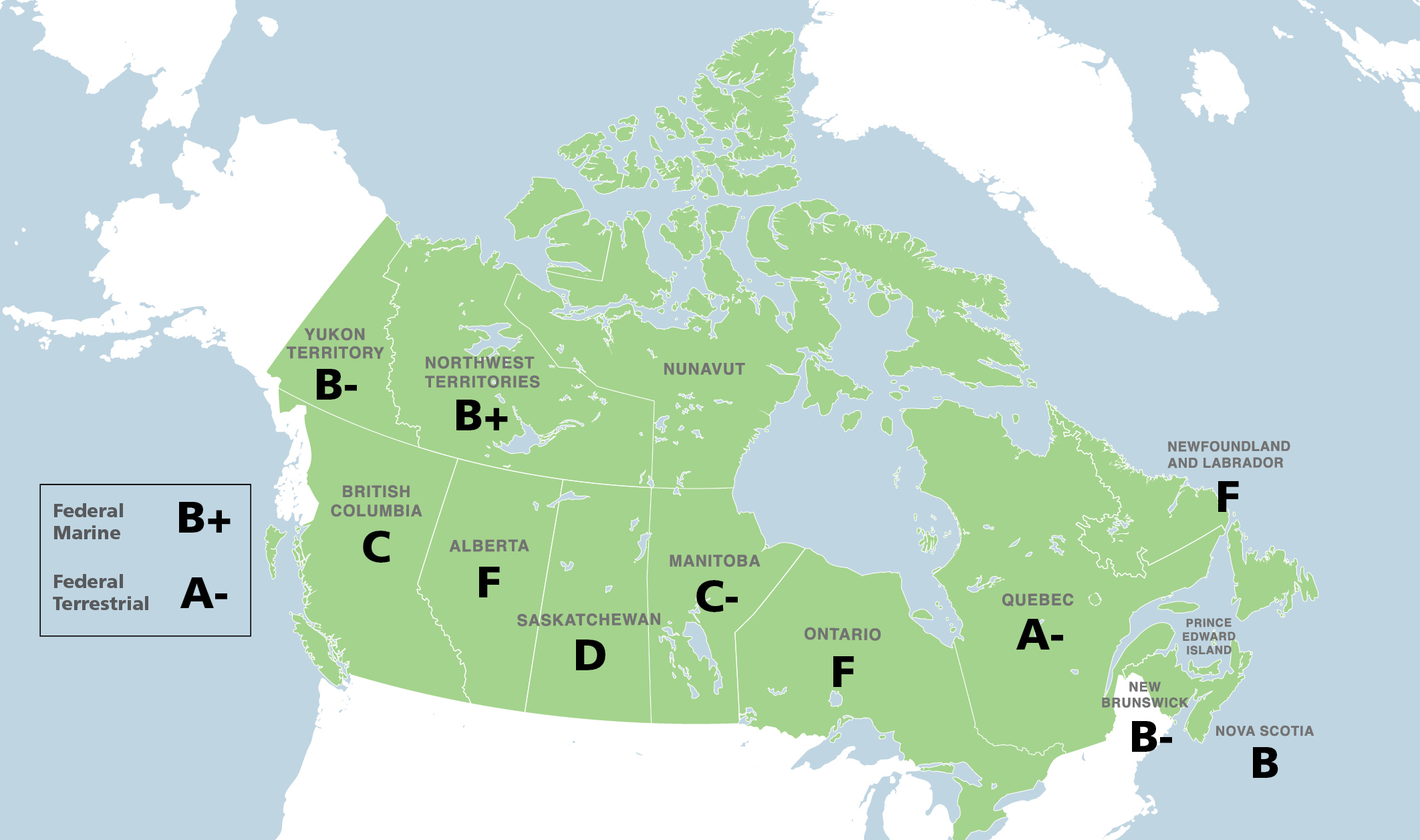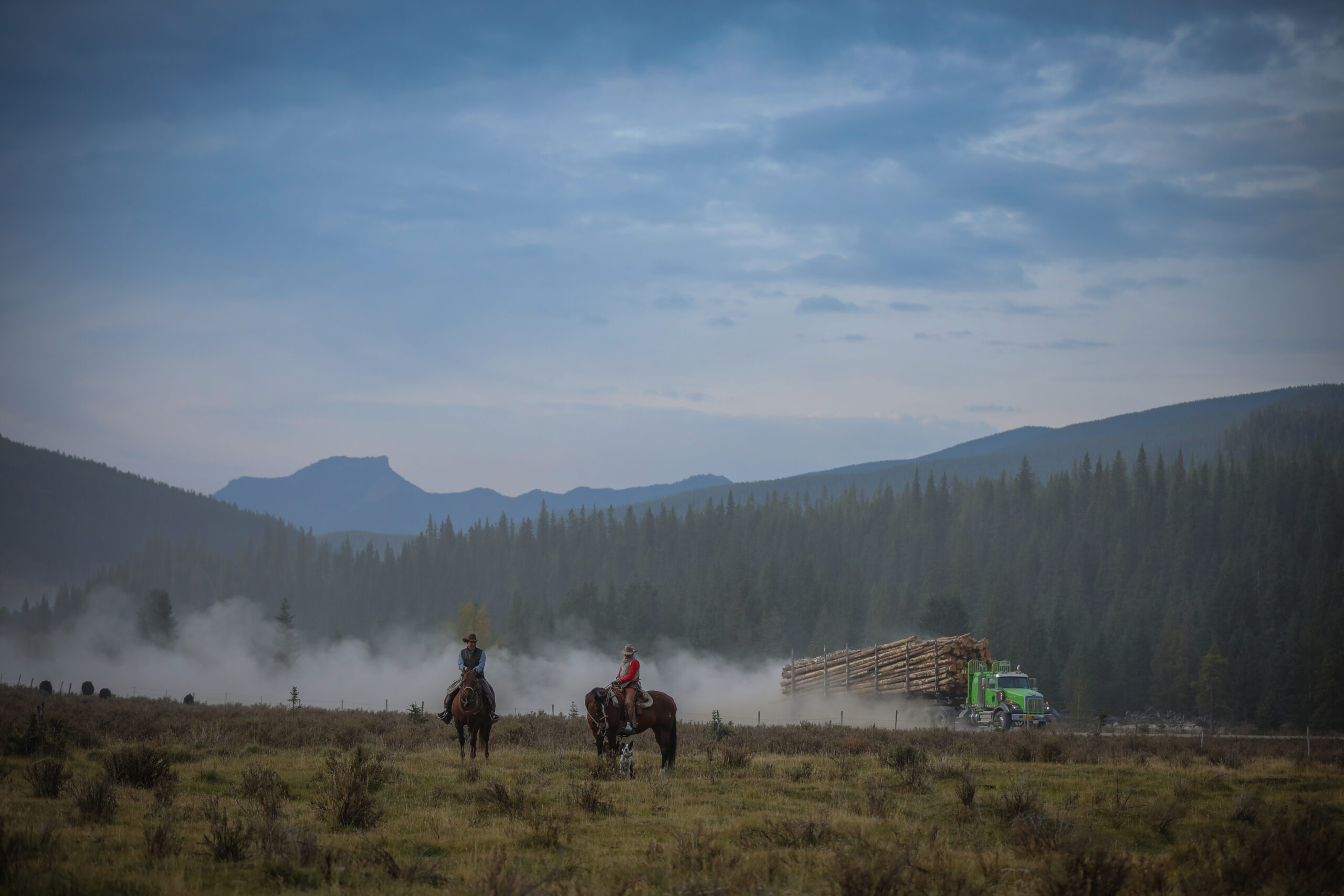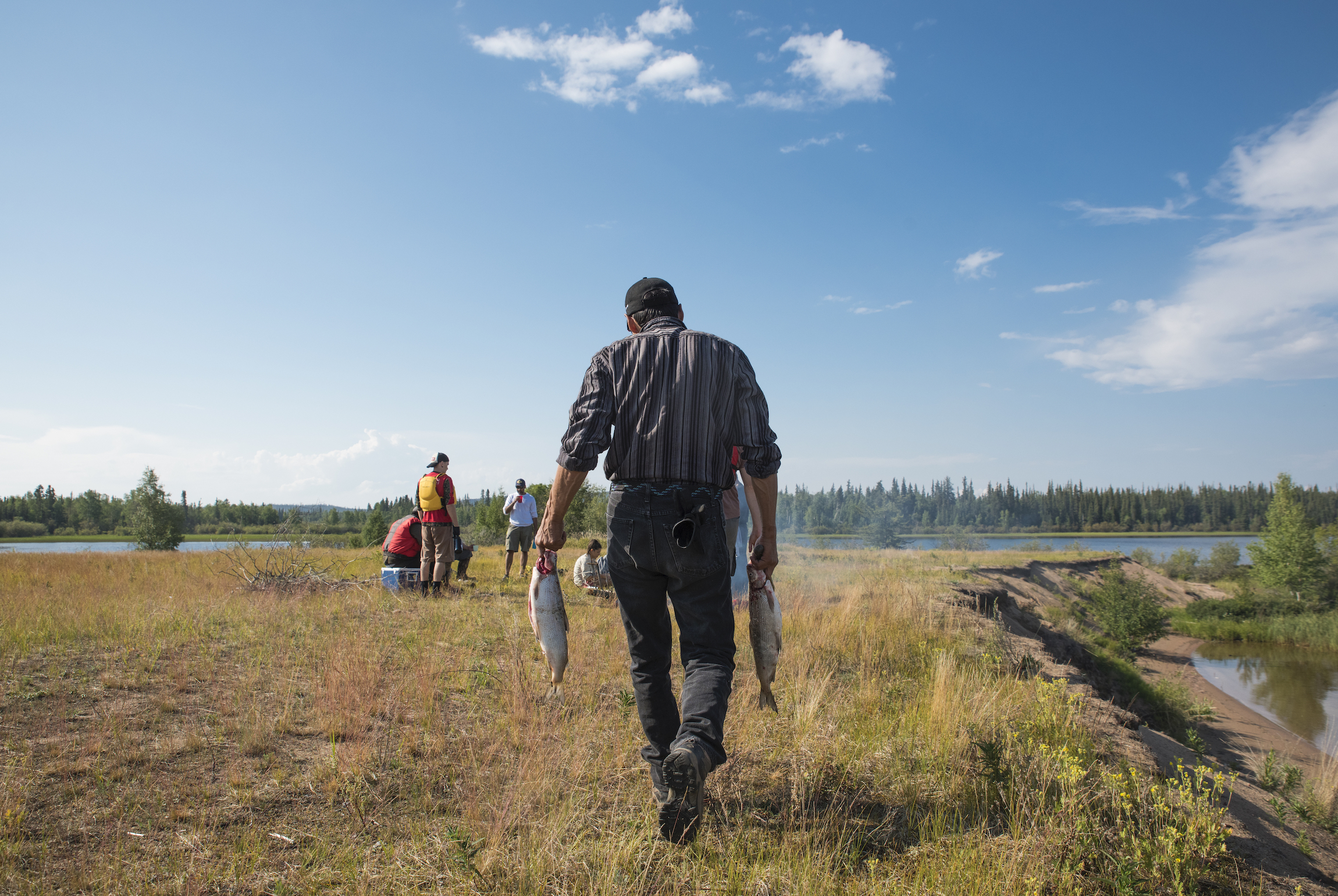
The Right Honourable Mary Simon aims to be an Arctic fox
Canada’s first-ever Indigenous governor general doesn’t play favourites among our majestic natural wonders, but she...
The federal government, Quebec and the Northwest Territories are leading Canada’s efforts to protect land and water, but Ontario, Alberta, Newfoundland and Labrador and Saskatchewan are laggards heading in the wrong direction, says a new report card released on Tuesday by the Canadian Parks and Wilderness Society (CPAWS).
The report — The Grades are in: A report card on Canada’s progress in protecting its land and ocean — is the first of its kind. It tracked the conservation record of all provinces, territories and the federal government and measured how close each one has come to targets set in 2010 to protect 17 per cent of Canada’s terrestrial territory and 10 per cent of its oceans.
While there are mixed reviews across the country, the report singles out Ontario, Alberta and Newfoundland and Labrador in particular, giving each of them an “F” for inadequate policies and actions. Saskatchewan also received a “D” for its performance.
“These four jurisdictions demonstrated little or no commitment to protecting more of their land base,” the report states. “In Ontario and Alberta, this lack of interest is coupled with serious harmful anti-conservation action, including rolling back nature protection policies and legislation and proposing the delisting of protected areas.”
The 2010 targets emerged from Canada’s international commitments made under the UN Convention on Biological Diversity. More than 150 government leaders signed this international agreement at the 1992 Earth Summit in Rio de Janeiro to promote sustainable development and protect ecosystems essential for food security, medicines, fresh air, water, shelter and a clean and healthy environment. But international progress has been slow to achieve the objectives in the decades that followed.

The executive director of CPAWS, Sandra Schwartz, said the conservation group decided to prepare this report because it believes that the planet is facing a double threat from the climate crisis as well as a “nature emergency” due to human activities that are causing rapid habitat loss and fragmentation across the planet.
“If we don’t halt and reverse the critical decline of biodiversity across the globe, climate action alone isn’t going to be enough,” Schwartz told The Narwhal in an interview. “It’s not just because we like to go out for nature walks or to go [out on] a canoe. Our health is intimately linked to the health of our planet. And that includes the health of the biodiversity of the planet we call home.”
The report also noted that Indigenous leadership was one of the drivers of success in provinces with a strong track record. For example, in Quebec, which received an “A-” grade, the conservation group’s report card said the biggest advances were made in northern regions where Cree, Inuit, Naskapi and Innu nations and communities “identified vast ecologically and culturally significant areas for protection and worked with the Quebec government to protect these areas under Quebec law.”
In December, Quebec announced plans to expand protections in the Eeyou Istchee, homeland of the Cree Nation, which would double the territory’s protected area from 12 to 24 per cent. The territory includes the carbon-rich Broadback River watershed, which is a sanctuary to migratory birds and provides habitat to at-risk woodland caribou.
But the report also said that some strong gaps remained in the southern part of the province and the southern boreal forest, where it identified industry and the Ministry of Forests, Wildlife and Parks as a “major obstacle.” Overall, Quebec was estimated to have protected 16.7 per cent of its territory by 2020.
The report card had a particularly harsh evaluation of Ontario and Alberta for reversing actions of previous governments that were designed to promote conservation and protect threatened species. Instead of sustaining those policies, the report card said the governments in those provinces had instead chosen to open up sensitive areas to new and unsustainable development.
In Ontario, the report said the province had only protected 10.7 per cent of its territory, and that most of the progress occurred in 2011. More recently, it said the provincial government had “dismantled or weakened key elements of its environmental law and policy framework, including the Endangered Species Act and the environmental assessment process.”
The report card said Alberta had protected 15.4 per cent of its territory by 2020, but began to reverse course in 2019. It is currently permitting industrial activities in many provincial protected areas. This would include a 2020 decision to open up the Eastern Slopes of the Rocky Mountains to coal exploration and mining. Although the government announced new public consultations in response to public pressure, some permits were already issued, the damage had begun and several projects are moving forward, the report card said.
The report also said that about 95 per cent of Alberta’s provincial parks do not have management plans, while most of the other parks have plans that are out of date and not implemented.
“Alberta is in urgent need of a conservation course correction,” said the report. “This includes not only refraining from policies and actions that threaten natural ecosystems, but also committing to evidence-based conservation targets and standards for protected areas, providing stronger protection for the Eastern Slopes and supporting Indigenous-led conservation initiatives, including Guardians programs.”

Conservation efforts have emerged as a significant resource in Canada’s battle against climate change after a 2017 study published in the Proceedings of the National Academy of Sciences found that the simple act of preserving wetlands, forests and grasslands could provide more than one-third of the emissions reductions needed to stabilize global temperature increases below 2 C by 2030 under the Paris Accord. As home to 25 per cent of Earth’s wetlands and boreal forests, as well as endangered prairie grasslands and the world’s longest coastline, Canada has a significant role to play in fighting global climate change by using nature-based climate solutions.
The report found that Newfoundland and Labrador had protected 6.9 per cent of its territory, but “made virtually no progress over the past decade in creating new protected areas and still ranks behind most Canadian provinces and territories in the percentage of land and inland waters protected.” It said that the province only upgraded the status of one small seabird site over the past decade, the Lawn Bay Ecological Reserve.
Saskatchewan had protected 9.8 per cent of its territory, as of 2020, but it “showed little ambition and achieved limited progress in protecting nature,” the report said.
The federal government received an “A-” for its efforts to protect land and freshwater even though the country as a whole had only protected 5.1 per cent of its territory, well below the 17 per cent target. The report card also noted that there were some positive signs such as new proposals from Indigenous nations and Indigenous-led conservation efforts, with the support of the federal government’s $175 million Canada Nature Fund.
The federal government also earned a “B+” in the report card for its efforts to protect oceans, noting that it had protected 13.8 per cent of marine areas, exceeding the international target of 10 per cent. The lower grade for oceans protections was due to “significant weaknesses in protection standards and the lack of progress on implementing minimum standards and Indigenous-led conservation lowered the grade,” the report stated.
The report also said that Canada had made “considerable progress” on marine protection since 2015 when less than one per cent of marine areas were protected.
Regarding land and freshwater, the report said the federal government demonstrated strong national and international leadership, supporting and elevating Indigenous-led conservation as well as significant budget investments and new targets, while noting that more funding and management policies would still be needed.
Moira Kelly, a spokeswoman for federal Environment Minister Jonathan Wilkinson, said that the government has announced the two largest investments in nature conservation in Canada’s history, starting with a $1.3 billion investment announced in 2018 and an investment of over $4 billion announced in the federal 2021 budget.
In January, the federal government announced a new target of protecting 30 per cent of lands and oceans by 2030.
“As the report indicates, we have made substantial progress, and remain committed to our ambitious targets,” Kelly said in an email. “As rampant biodiversity loss continues, we know there is more work to be done to preserve our land and water so future generations can experience Canada’s irreplaceable natural spaces. We will continue to work with local communities, Indigenous Peoples and provincial governments to do just that.”
The Northwest Territories earned a “B+” after protecting 15.8 per cent of its land by 2020. The report noted that the jurisdiction had created four Indigenous protected areas since 2018 that covered almost five per cent of the territories.

“The progress was largely the result of longstanding Indigenous leadership and investments from the federal Nature Fund.” The report noted that demand for the Canada Nature Fund “far exceeded supply,” demonstrating appetite for new funds allocated for conservation efforts in the 2021 budget.
The Narwhal shared details of the report’s findings with several other governments on Monday, seeking comment, but not all responded.
A spokeswoman from the Saskatchewan environment ministry told The Narwhal in an email that the province was “taking the time needed” to ensure it was protecting a network of territory of the highest ecological and cultural value and that it was already making great strides in expanding protected areas while balancing economic opportunities and conservation goals.
The province also said it was finalizing a new roadmap that would introduce a five-year plan to achieving its conservation goals.
Alberta did not respond to requests for comment on Monday, while spokespeople for the Ontario and Newfoundland and Labrador governments said they were working on providing a response.
The Canadian Parks and Wilderness Society also said that this initial report card should serve as a baseline, to track progress in the coming years and that it hopes governments will use it to track which policies are most effective at driving progress.
The federal government was the only one to be measured on efforts to protect oceans since this is considered to be of federal jurisdiction. The report card also said that the existing targets are “just milestones towards what is ultimately needed to conserve biodiversity: protecting at least half of the Earth’s land and ocean ecosystems.”
Get the inside scoop on The Narwhal’s environment and climate reporting by signing up for our free newsletter. A $335 million funding commitment to fund...
Continue reading
Canada’s first-ever Indigenous governor general doesn’t play favourites among our majestic natural wonders, but she...

In Alberta, a massive open-pit coal mine near Jasper National Park is hoping to expand...

A trade war could help remake B.C.’s food system, but will family farmers be left...
